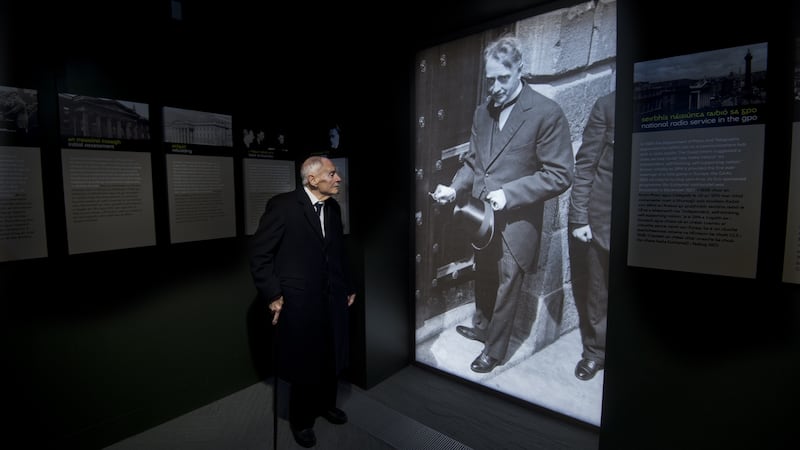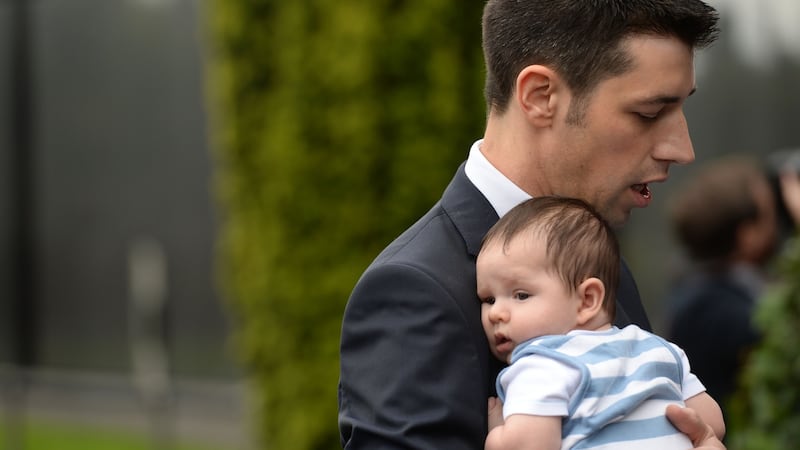
In October 1963, a month before he was assassinated, US President John F Kennedy gave a speech at Amherst College in honour of the poet Robert Frost, who had died the previous January.
“A nation reveals itself not only by the men it produces,” he said, “but also by the men it honours, the men it remembers.”
By men he presumably meant, as was the shorthand at the time, notable men and women.
The centenary commemorations, which took place in Ireland in 2015 and 2016, revealed a lot about the nation – much of it good. It revealed a country at ease with the contradictions of its past, wise to its shortcomings in the present and hopeful for the future.
Centenary – Ireland Remembers 1916, which I edited, is not a book about 1916, but a book about 2016.
I was privileged to attend dozens of commemorations, from the O’Donovan Rossa funeral centenary at Glasnevin Cemetery in August 2015 to the national conference in NUI Galway in November 2016, the two events which begin and end Centenary.
The commemorations could have been divisive. Many feared they would become another opportunity to ventilate the tired arguments of who was right and who was wrong 100 years ago.
Instead, they became a grassroots success. The Government proposed, but the people disposed. That stretched from the hundreds of thousands who took to the streets over the Easter weekend 2016 in Dublin to the thousands who clambered up on Banna Strand’s sand dunes for the Casement event in April 2016.

Those involved in organising the 3,500 events, both large and small, in every community in Ireland, did so voluntarily because they wanted to mark this exceptional centenary in their own way.
Children too embraced the commemorations with the Flags for Schools initiative giving them a new perspective on the tricolour. Thousands of schoolchildren also took the opportunity to write a proclamation for a new generation.
The book was commissioned by former minister for arts, heritage and the Gaeltacht Heather Humphreys. I was approached in the summer by the then director of Ireland 2016, John Concannon, to edit it.

The Royal Irish Academy came on board as a partner – a wise choice given its track record of producing not just books of substance, but beautiful publications. The aesthetic of the book was most important from the beginning. The layout and look, the green and gold linen cover, and the tricolour bookmarks, a unique detail, were the work of Ciaran Ó Gaora and his design team at Zero G.
Together we were set a goal of producing a book that was an accurate and comprehensive chronicle of the year, recognising that, while the commemorations were generally a success, some took exception to aspects of them – such as the future of Moore Street and the remembrance wall at Glasnevin Cemetery.
We were fortunate to have at our disposal the work of talented photographers who took so many memorable images. Photographers such as Brenda Fitzsimons, Cyril Byrne and Eric Luke from this newspaper, Gerry Mooney from the Irish Independent, Mal McCann of the Irish News, the Maxwell brothers, Tony and Mark, Joe O’Shaughnessy from the Connaught Tribune, to name but a few, told the story of the year. The words provided the context.
We were grateful too to be able to showcase the wonderful work of artists including Mick O’Dea, Jethro Sheen from Galway, Ciara O’Keeffe and Katie Moore, the artist in residence at the Jackie Clarke Collection in Ballina.
It was the year, as Fintan O’Toole put it, that “official Ireland trusted artists”.
It was important the book reflected the breath of events across the island of Ireland. Every county is represented. Due regard was paid to the North where both communities have radically different takes on the Rising in comparison to those who live in the Republic.

The Easter Rising was an event of international significance. It presaged many of the independence movements which led to the redrawing of the map of Europe after the first World War. It also provided the inspiration for many ex-colonies to win their independence.
The diaspora was one of seven strands to the commemoration program identified by the Irish Government. Recognising the role of the diaspora was also an imperative for us involved in the production of the book.
There were events in 60 countries and 156 cities around the world from places you would expect such as New York and London, but also place you would not expect such as Manuas in the Brazilian rainforest and the Nigerian capital Abuja.
The most important people in the book are the testimonies of 50 individuals involved in the commemoration year. Some are well-known. President Michael D Higgins outlined about how the Civil War left lasting divisions in his family. Republic of Ireland manager Martin O’Neill wrote about how the Irish fans carried the spirit of the commemorations into the European Championships in 2016. Senator George Mitchell remembered how the history of modern Ireland is bookended by events that happened at Easter – the Rising and the signing of the Good Friday Agreement.
Some of the most powerful testimonies come from those who are not public figures. Christina Hannon spoke of the pride she felt in her daughter Mary, who has special needs, accepting the national flag on behalf of St Raphael’s Special School in Celbridge, Co Kildare.
Johnny Lynn, from Edgeworthstown, Co Longford, spoke movingly of his father Jackie, who rode the winner in the Irish Grand National on Easter Monday 1916 and died young. He also recounted the multiple racing tragedies which befell his family afterwards.
The 50th anniversary commemorations in 1966 represented only one narrative of the 1916 story. Women were barely mentioned; neither were civilians who constituted the majority of those killed in the Rising. The Irishmen who died in the first World War in their thousands during those years were simply forgotten about. They did not fit the national narrative.
The centenary commemorations showed a more generous minded country. Women, who were one in six of those rebels who participated in Easter Week, were honoured in a way which reflected their contribution to the national story. Waking the Feminists, which arose out of the Abbey Theatre’s centenary programme and its absence of women playwrights, was not only cathartic, but prophetic, knowing what we know now about the abuse of power in the performing arts.
The event to remember the British soldiers who died in the Easter Rising would have been unthinkable a generation ago, but indicative of how Ireland and the troubled relationship between Ireland and Britain have been transformed.
A chapter in the book also reflects on the centenary of the Battle of the Somme and the other commemoration events around the first World War which took place in 2016.
The commemorations brought some pride back to the country following the collapse of the Celtic Tiger and the subsequent loss of economic sovereignty.
Much was made in the centenary year of how this country has fallen short of the ideals as outlined in the Proclamation. The problems of homelessness and inequality are a stain on the country’s conscience.
Yet, it also clear that Irish people, when given the chance to express it, are proud of Ireland’s status as an independent nation and proud of the men and women whose vision brought it about. The evidence is in every page in this book.
Centenary – Ireland Remembers 1916 is published by Government Publications priced €25. It will be available at the special price of €20 at The Irish Times Charity Christmas Fair, which takes place in The Irish Times, Tara Street, on Sunday, December 10th from 10am. Proceeds will go to Feilicean, the Stillbirth and Neonatal Death Association of Ireland, and Women’s Aid.













